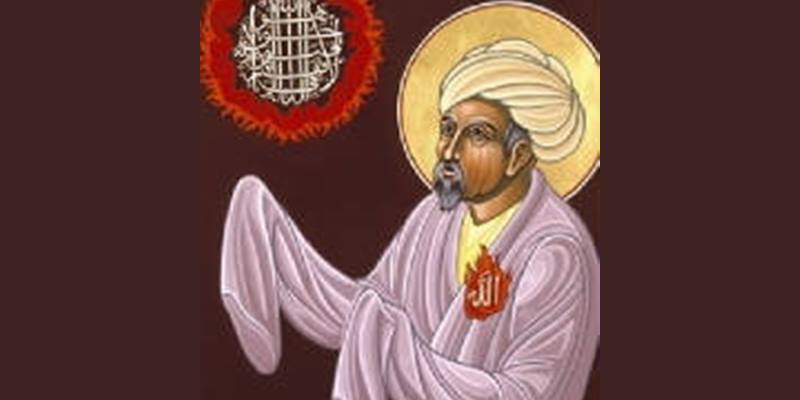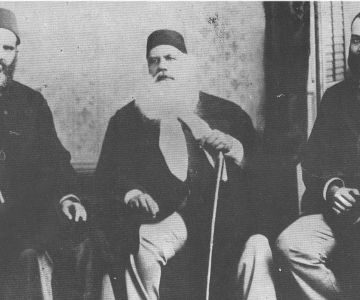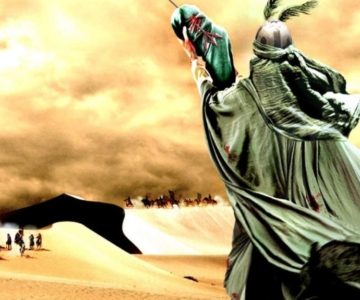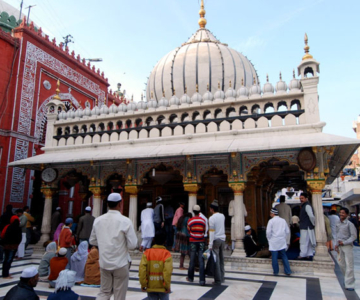By Akhilesh Mittal
In the third century of its advent Islam and its world were in ferment about forms of polity such as the Caliphate and ideas like the relationship of man and God. The Caliph recognized by Shias (Fatimid) held court in Egypt while the Sunni Caliph (Abbasid) functioned from Baghdad. Many splinter groups came up with each having its own separate and distinct interpretation of the Word.
Al Hussaiyn bin Mansour returned to Ahwaz in 280 Al Hijri and started preaching his own ideas of Being and Becoming to those who would hear him. Hussaiyn’s charisma arose from his interminable prayers and fasting and the great passion he had for the Word and its interpretation. It attracted a multitude of listeners and made for envy jealousy and enmity.
By the time (281 Al Hijri) Hussaiyn bin Mansour undertook his second pilgrimage to Mecca and Medina he had already achieved considerable fame. Four hundred devotees all dressed in patchwork coats (muraqqu’a ) :the outward sign of futuwwa : a brotherhood of those who have freed themselves from worldliness, followed him in his sojourn.
For the spiritually elevated Al Hussaiyn was ‘Al Hallaaj’ or the carder (dhuniyaa) of hearts and the spirit ; one who separates and purifies each strand like the carder/dhuniyaa does raw or matted- through- use cotton wool. Those who followed him were seeking either enlightenment or a miraculous intervention by the saint in order to free themselves of whatever worldly concerns anguished them most.
Al Hussaiyn developed a reputation for miracle working early on in his career as a preacher and expounder of philosophy. He himself tried to explain that there were no miracles involved and recounted the incident when he is supposed to have reached under his prayer mat and brought out a fistful of coin from the mud. Al Hussaiyn says that a devotee came to the mosque where he was praying and gave him some coins to distribute to the needy. As there were no beggars around Al Hussaiyn placed the coins under his prayer mat and resumed his practice of continuous prayer and almost interminable fasting and forgot all about the money. A few days later when he was not deep in prayer but aware of and taking interest in whatever was going on around him some mendicants came and asked for alms. Al Hussaiyn remembered the coins under the mat, reached out and gave them to the supplicants. A miracle story was born which hounded him for the rest of his life.
Restless in his quest for Truth Hussaiyn bin Mansour Al Hallaj set forth on his journey to India in 284 Al Hijri when he was forty years old. He returned after visiting Mansoura and Multan. As Adi Shankara had already pronounced his ‘Aham Brahmaasmi’ by this time is it possible that its Arabic echo ‘Ana’l Huqq’ arose out of the Indian experience of Al Hussaiyn?
The Sufi believes that the life of man on earth is an exile from God – that Death which helps reunite the finite soul with the Infinite, is not an event to be feared but an ecstasy to be welcomed. The anniversary of the death of a Sufi saint is therefore marked with celebration as for a wedding and is called ‘Urs or Union.
A verse of Al Hussaiyn bin Mansour al Hallaaj which occurs in one version of the Akhbar al Hallaaj reads
“Unify me (wahhidni), O my Only One…Let me be the Truth and as Truth bestows investiture upon the one who becomes It, let our separation be no more..”
This statement and its fulfillment in the proclamation ‘Anaa al Huqq’ (I am the Truth/Reality/God) was interpreted as blasphemy by the enemies of Al Hussaiyn..
April 922 A.D. saw al Hussaiyn bin Mansour al Hallaaj martyred. He still lives while those who killed him are dead gone and forgotten.



